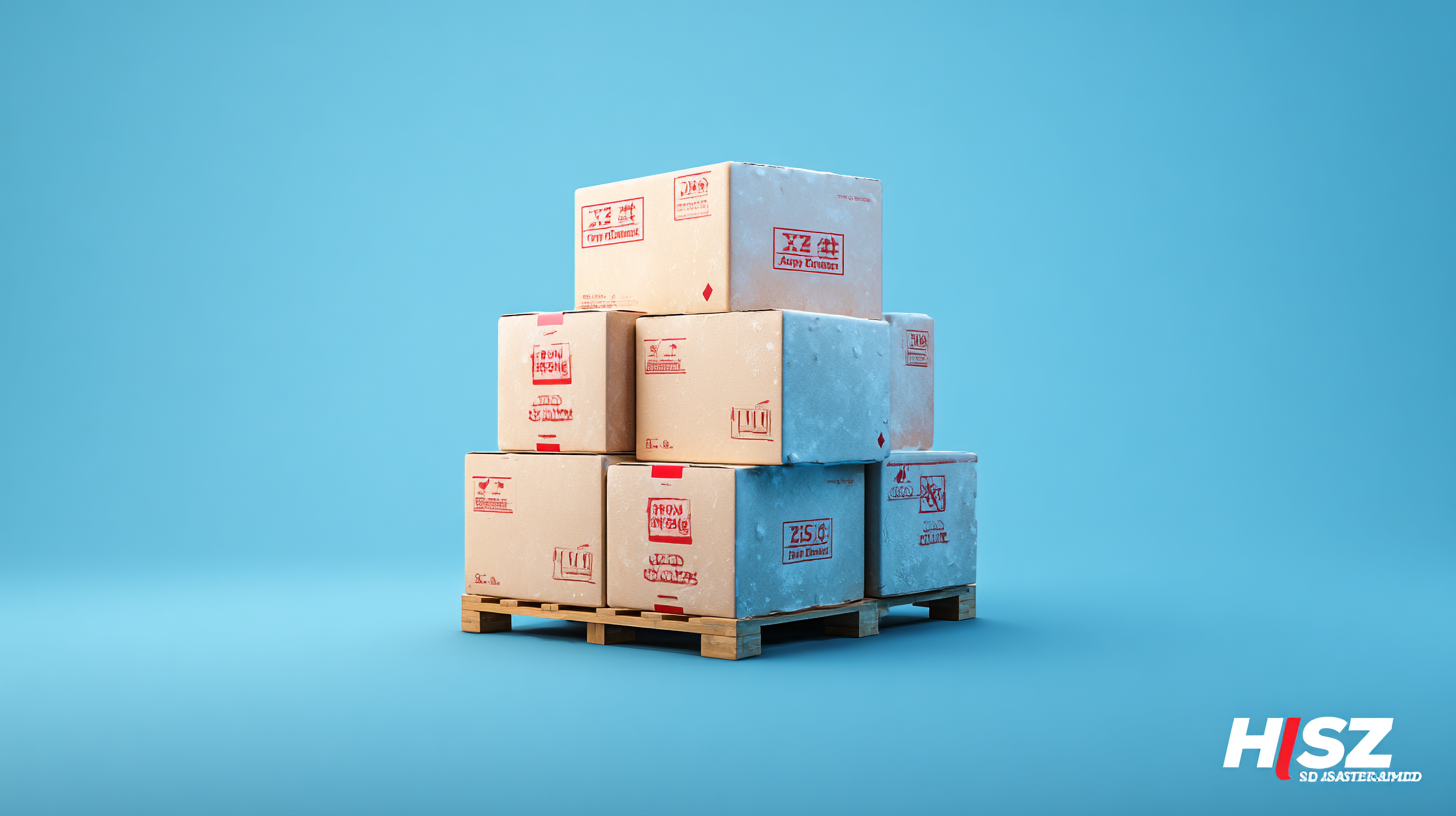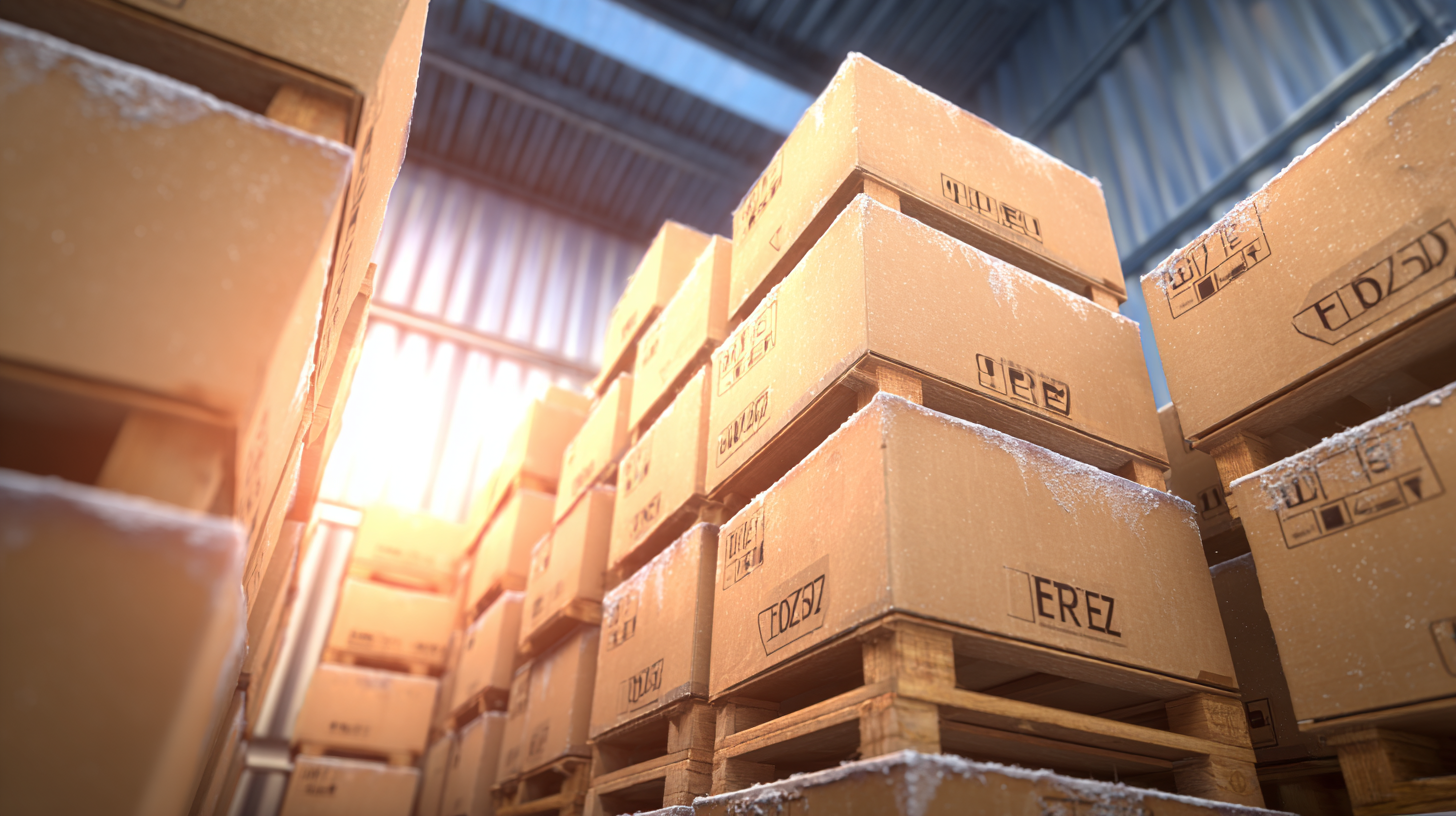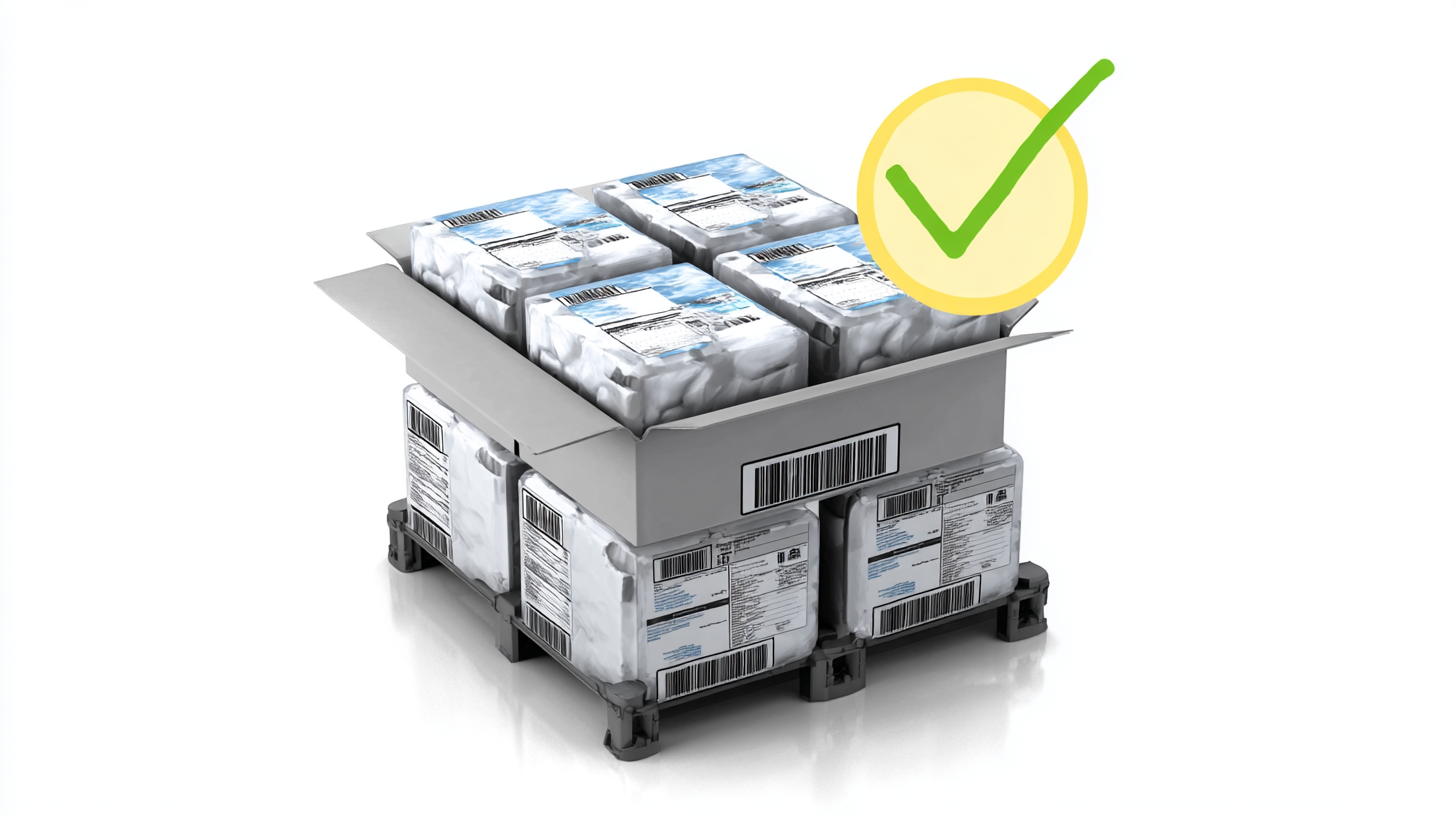Top Strategies for Selecting the Most Efficient Frozen Food Shipping Solutions
In today's fast-paced marketplace, the demand for frozen food continues to surge, with the global frozen food market projected to reach a staggering USD 500 billion by 2024, according to a report by Allied Market Research. As consumers increasingly seek the convenience of frozen meals and ingredients, ensuring that these products reach their destinations in optimal condition becomes a critical focus for distributors and retailers alike. One of the key factors in maintaining product integrity during transit is the selection of the right shipping solutions, particularly the use of high-quality Frozen Food Shipping Boxes. These specialized packaging solutions not only help preserve the temperature and quality of frozen goods but also adhere to regulatory standards, reducing the risk of spoilage and maintaining customer satisfaction. This blog will explore the top strategies for selecting the most efficient frozen food shipping solutions that can meet the evolving demands of the market.

Best Practices for Ensuring Temperature Control During Frozen Food Shipping
When it comes to shipping frozen food, maintaining temperature control is paramount for ensuring food safety and quality. As new FDA guidelines emphasize the importance of temperature control and risk assessment in food safety, businesses must implement best practices at every step of the supply chain. Utilizing temperature-sensitive packaging and reliable monitoring systems will help businesses track and maintain the requisite temperatures during transit.
Tip: Always choose shipping providers that specialize in cold chain logistics. They should employ advanced technologies such as real-time temperature monitoring and alert systems, which can significantly reduce the risk of temperature fluctuations that could compromise food safety.
Moreover, the recent trend of raising freezer temperatures to enhance sustainability must also consider food safety aspects. While adapting to slightly higher temperatures can reduce energy consumption, it is crucial to ensure that food quality is not compromised. Comprehensive training for staff on handling frozen goods under these new parameters is essential.
Tip: Implement regular training sessions for employees on the latest food safety practices. Keeping staff informed about temperature requirements and emergency procedures for temperature deviations can prove invaluable in maintaining safety standards throughout the shipping process.
Top Strategies for Selecting the Most Efficient Frozen Food Shipping Solutions
| Strategy | Description | Importance | Examples of Implementation |
|---|---|---|---|
| Use of Insulated Packaging | Employ insulation materials that help maintain temperature. | High | Foam containers, thermal bubble wraps |
| Utilize Dry Ice or Gel Packs | Incorporate cooling agents for extended temperature control. | Very High | Dry ice in well-ventilated boxes, gel packs |
| Temperature Monitors | Implement monitoring devices to track temperature throughout shipping. | Critical | Digital temperature loggers, alert systems |
| Optimize Shipping Routes | Plan routes that reduce travel time and distance. | High | Real-time GPS tracking, route planning software |
| Regular Training for Staff | Educate staff on best practices for handling frozen foods. | Moderate | Workshops, training manuals |
Choosing the Right Packaging Materials for Frozen Food Delivery
When it comes to choosing the right packaging materials for frozen food delivery, efficiency and quality are paramount. The frozen food industry has seen substantial growth, with the global frozen food market expected to reach approximately $318 billion by 2027, driven by the increasing demand for convenience and healthy options. Selecting proper packaging materials that maintain the integrity of the product during transit is essential. Materials such as insulated boxes, dry ice, and gel packs not only provide insulation but also prevent temperature fluctuations that can compromise food safety.
Moreover, it's crucial to consider sustainability in packaging choices. A recent report highlighted that 73% of consumers prefer brands that use environmentally friendly packaging. Incorporating biodegradable or recyclable materials for frozen food shipping can significantly enhance brand reputation and consumer trust. Advanced packaging solutions such as vacuum-sealed bags can minimize air exposure, extending the shelf life while reducing the risk of freezer burn. As meal delivery services continue to diversify with options like low-carb and plant-based meals, the ability to ensure that these products arrive in optimal condition will be key to customer satisfaction and retention.

Evaluating Shipping Partners for Reliability and Efficiency
When evaluating shipping partners for frozen food, reliability and efficiency are paramount. The transportation of perishable goods such as frozen food requires meticulous attention to temperature control, handling processes, and delivery timelines. Therefore, it's essential to conduct thorough research into potential shipping partners' track records. Look for proven experience in handling frozen goods, as well as certifications that demonstrate adherence to food safety regulations.
In addition to reliability, consider efficiency in logistics and distribution capabilities. A shipping partner should have a well-established network that minimizes transit time while maintaining the cold chain. Evaluate their ability to integrate technology, such as real-time tracking systems, which can provide transparency throughout the shipping process. Moreover, assess their contingency plans for unforeseen circumstances, ensuring that your products remain uncompromised during transit. Partnering with a dependable shipper can ultimately enhance your business’s credibility, delivery performance, and customer satisfaction.
Understanding Regulatory Compliance for Frozen Food Transportation
When selecting the most efficient frozen food shipping solutions, understanding regulatory compliance is paramount. As the global cold chain logistics market is projected to reach USD 1,245.2 billion by 2033, with a robust CAGR of 14.5%, businesses must navigate a complex landscape of regulations to ensure product safety and quality during transportation. Compliance with local and international guidelines not only mitigates the risk of penalties but also enhances customer trust and satisfaction.
The growing demand for cold chain logistics necessitates stringent adherence to compliance obligations, especially amidst evolving regulatory frameworks. Recent developments, such as the EU's 14th sanctions package against Russia, highlight the need for companies to stay informed about sanctions and their implications on logistics operations. Additionally, the cold chain telematics market, estimated at USD 5.63 billion in 2023, is projected to expand at a rate of 23.9% CAGR from 2024 to 2030. This growth underscores the importance of employing advanced technologies to monitor compliance and maintain the integrity of perishable goods during transit.

Innovative Technology Solutions to Enhance Frozen Food Shipping Efficiency
In the rapidly evolving world of frozen food logistics, innovative technology solutions play a crucial role in enhancing shipping efficiency. One of the most significant advancements is the use of real-time tracking systems that monitor temperature and humidity levels throughout the shipping process. This technology enables shippers to ensure that frozen products remain within optimal conditions, significantly reducing spoilage and waste. By employing IoT devices, companies can gather data that helps to improve supply chain transparency and allows for quick adjustments during transit if any anomalies are detected.
Moreover, automation in warehousing and distribution is transforming the frozen food shipping landscape. Automated systems can streamline the picking and packing processes, maximizing throughput while minimizing human error. Robotics paired with artificial intelligence can optimize route planning, ensuring that deliveries are made in the shortest time possible without compromising product integrity. These technological advancements not only boost operational efficiency but also enhance customer satisfaction through timely and reliable deliveries. Companies that embrace these innovations are better positioned to meet the growing demand for frozen food products in a competitive marketplace.

 中国
中国